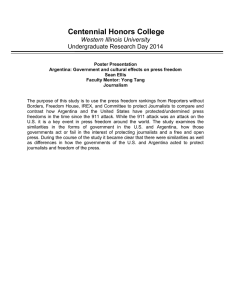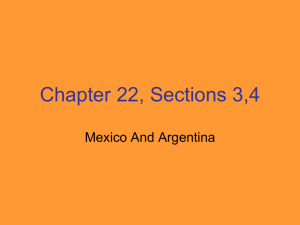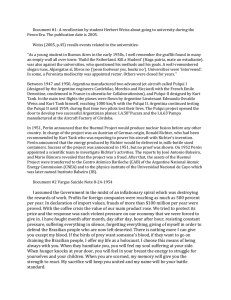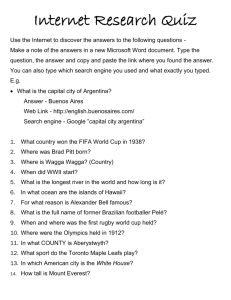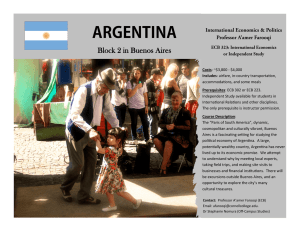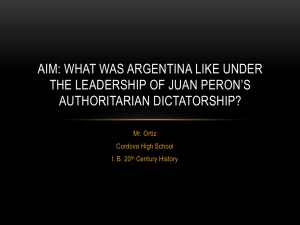Argentina- Case Studies Latin America Unit
advertisement
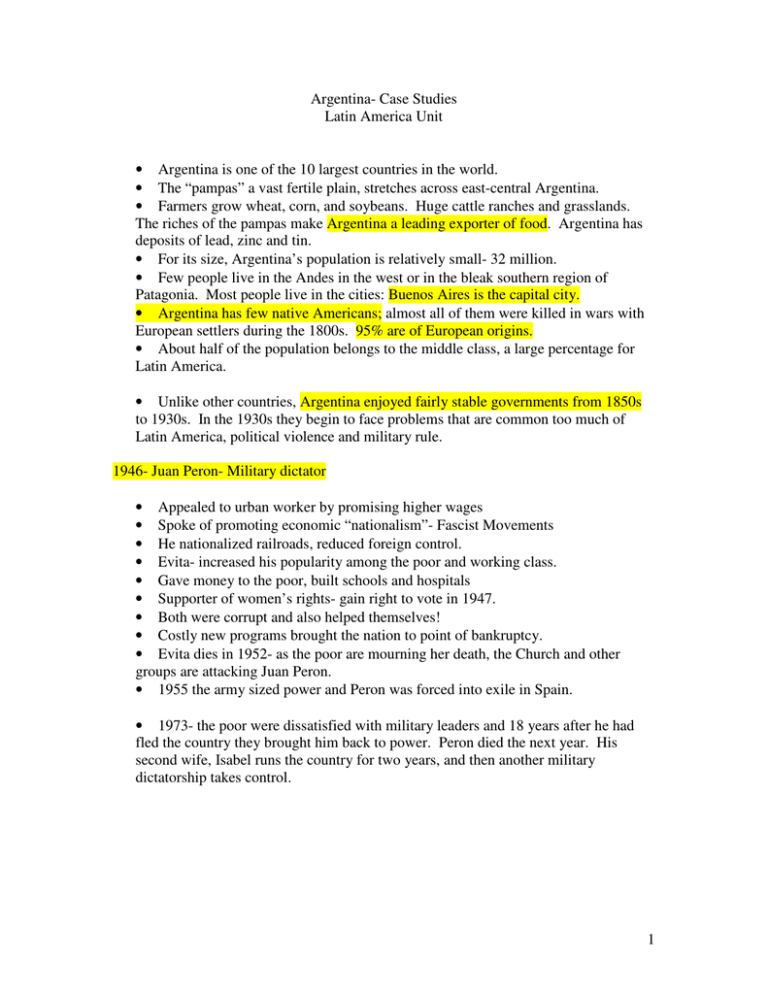
Argentina- Case Studies Latin America Unit • Argentina is one of the 10 largest countries in the world. • The “pampas” a vast fertile plain, stretches across east-central Argentina. • Farmers grow wheat, corn, and soybeans. Huge cattle ranches and grasslands. The riches of the pampas make Argentina a leading exporter of food. Argentina has deposits of lead, zinc and tin. • For its size, Argentina’s population is relatively small- 32 million. • Few people live in the Andes in the west or in the bleak southern region of Patagonia. Most people live in the cities: Buenos Aires is the capital city. • Argentina has few native Americans; almost all of them were killed in wars with European settlers during the 1800s. 95% are of European origins. • About half of the population belongs to the middle class, a large percentage for Latin America. • Unlike other countries, Argentina enjoyed fairly stable governments from 1850s to 1930s. In the 1930s they begin to face problems that are common too much of Latin America, political violence and military rule. 1946- Juan Peron- Military dictator • Appealed to urban worker by promising higher wages • Spoke of promoting economic “nationalism”- Fascist Movements • He nationalized railroads, reduced foreign control. • Evita- increased his popularity among the poor and working class. • Gave money to the poor, built schools and hospitals • Supporter of women’s rights- gain right to vote in 1947. • Both were corrupt and also helped themselves! • Costly new programs brought the nation to point of bankruptcy. • Evita dies in 1952- as the poor are mourning her death, the Church and other groups are attacking Juan Peron. • 1955 the army sized power and Peron was forced into exile in Spain. • 1973- the poor were dissatisfied with military leaders and 18 years after he had fled the country they brought him back to power. Peron died the next year. His second wife, Isabel runs the country for two years, and then another military dictatorship takes control. 1 “Dirty Wars” General Jorge Rafael Videla- March, 1976, in a well planned coup, the Argentine armed forces overthrew the government of President Isabel Martinez de Peron. This three man military junta took charge and began a ruthless campaign against liberals, leftists and political terrorists. Anyone suspected of being in any of those groups were subject to arbitrary arrest and those who had illegally profited from the former “corrupt” Peron government were prosecuted. People were kidnapped on the streets and never seen again. Prisons overflowed with so called political prisoners and torture was common- there were no trials or pretense of legal process. An estimated 11,000 -20,000 disappeared from 1976-1982. The Human Rights abuses caused the US government under President Carter to stop sending military aid to Argentina. Gradually the junta decreased their “dirty war” activities in response to adverse worldwide public opinion. In 1983, a civilian government was installed in Argentina. A eight-month long trial in Buenos Aires in 1985 found Videla and his navy commander, Admiral Emilio Massera guilty of homicide, illegal detention and other human rights violations- sentenced to life in prison. 2


